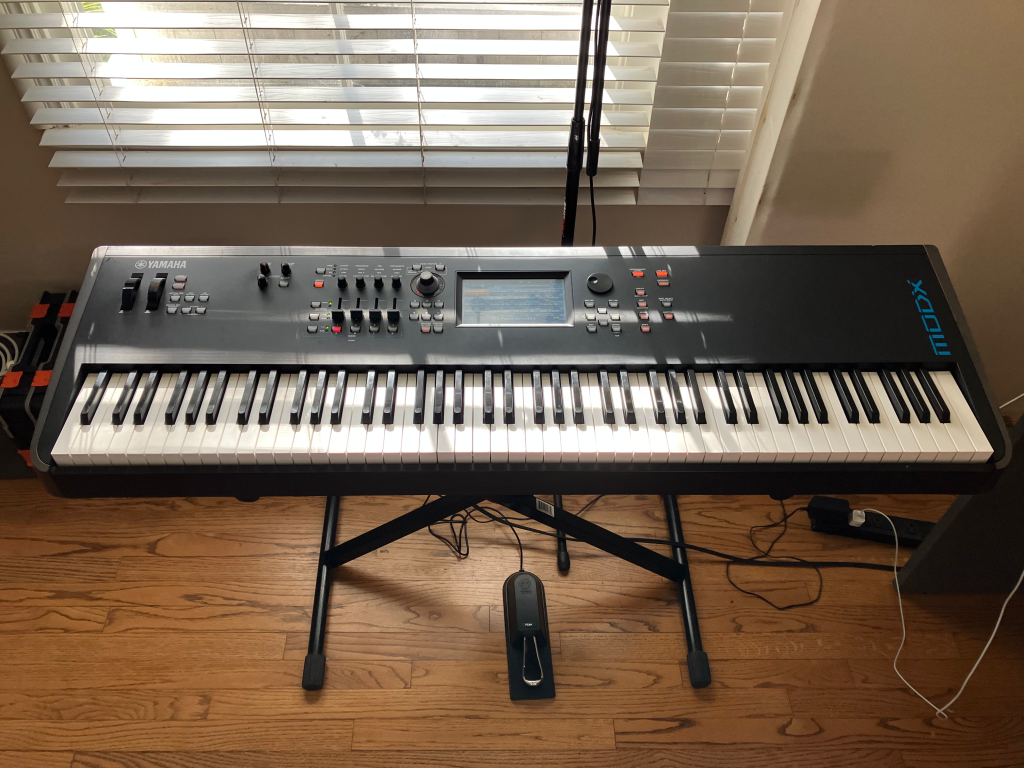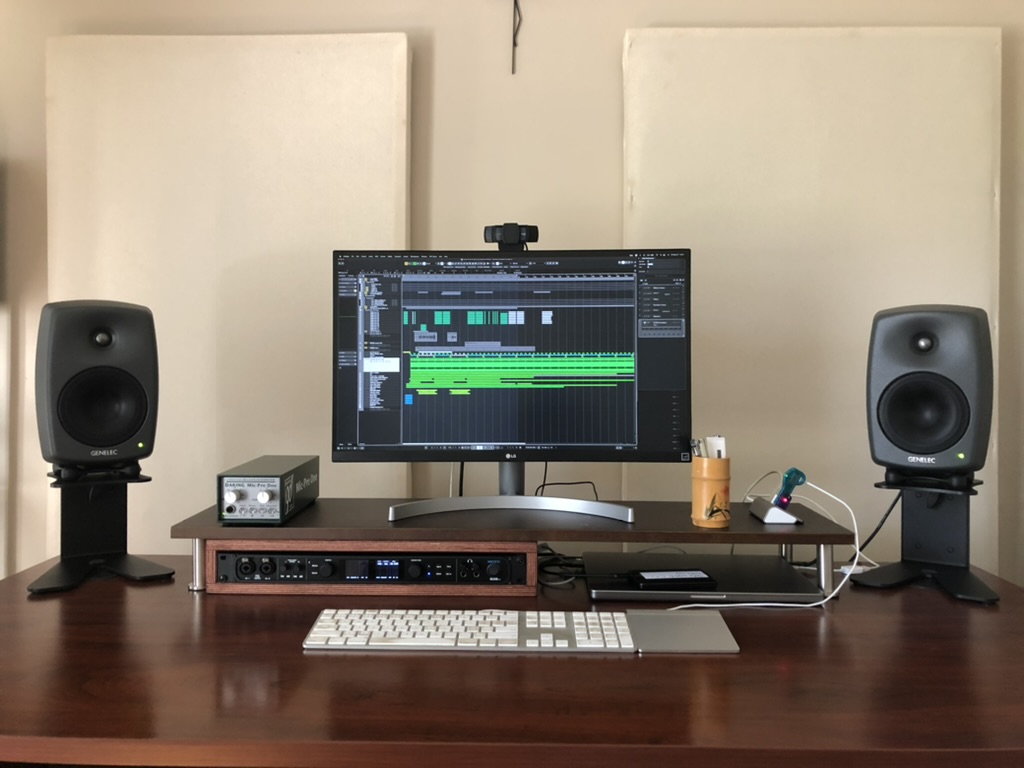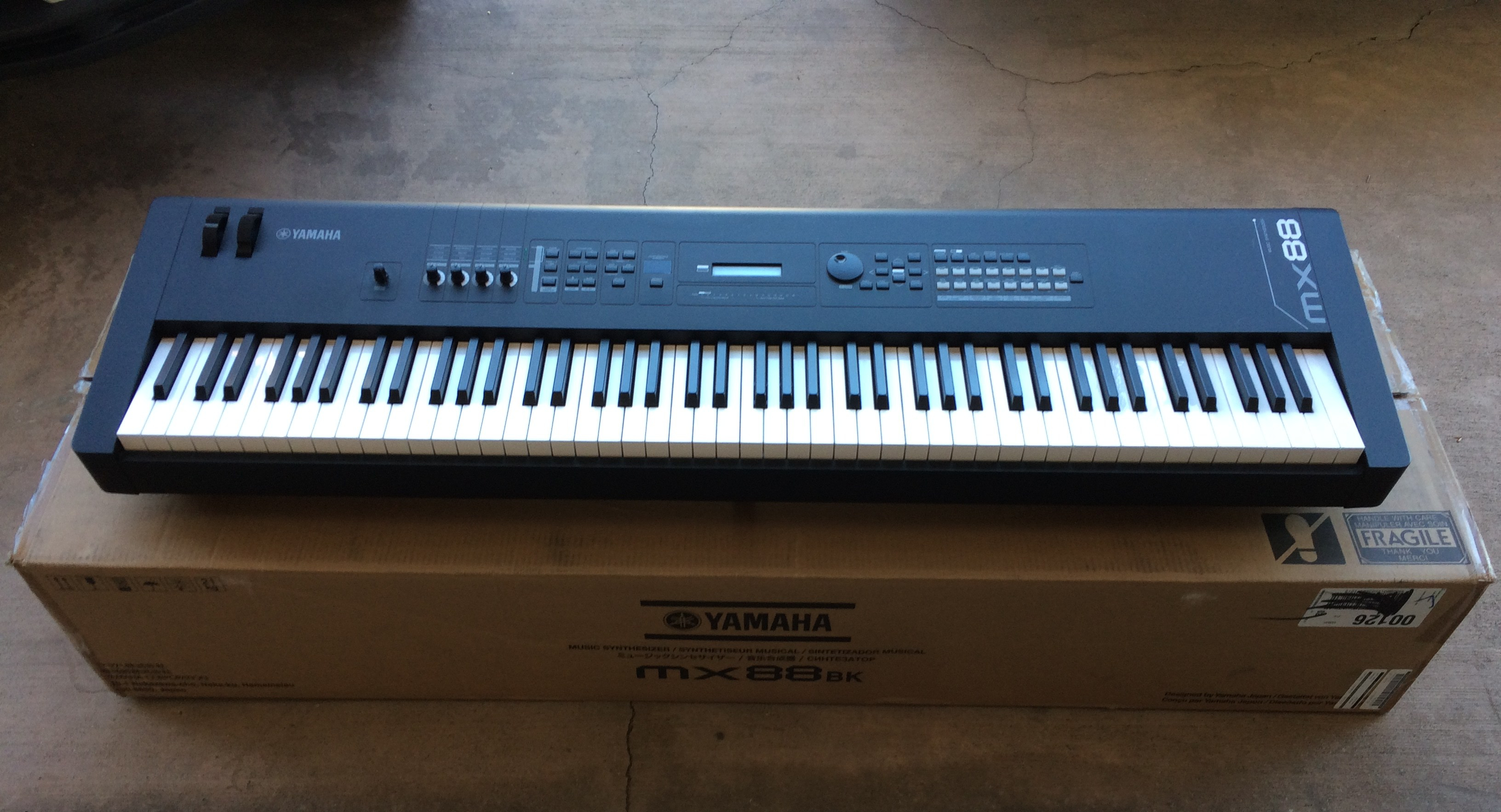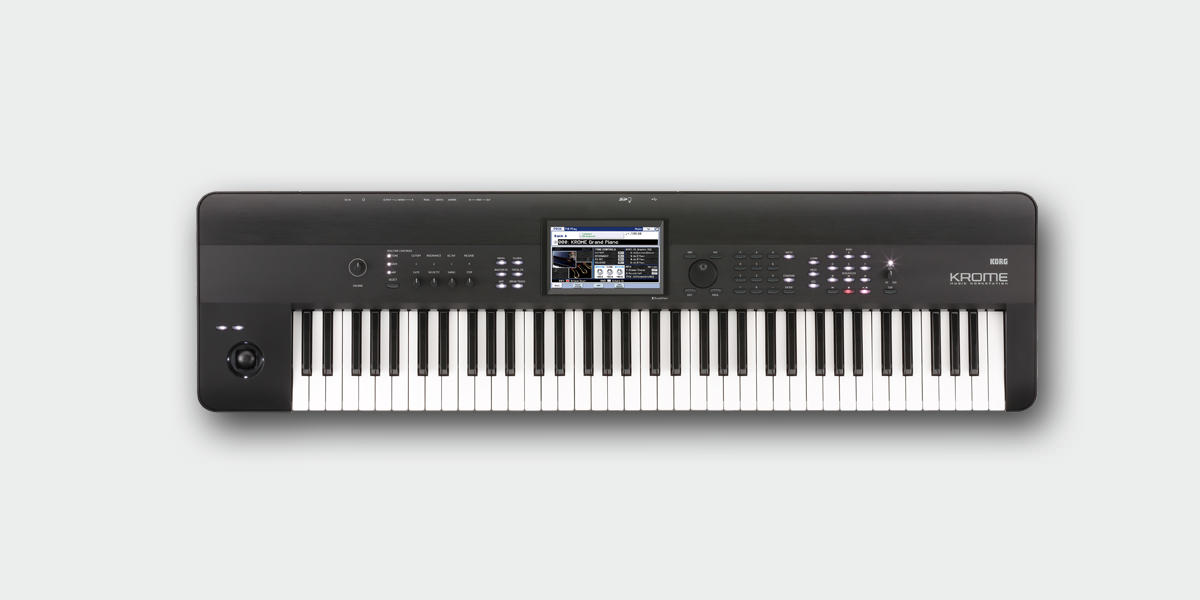
On paper, this things ticks almost boxes. It is literally everything I need in a keyboard, minus the aftertouch, so I got one as soon they were released back in 2018.
Now, nearly five years later, my initial enthusiasm hasn’t held up. While it does nearly everything I need it to do, I just never connected with it. I’m not sure how much of this is down to the mediocre GHS action on the 88-key version. Maybe I would have felt different if I had gotten the 61 or 76 semi-weighted version. I have owned various incarnations of the GHS action, and did not like any of them. And I feel that an instrument in the $2K price range should have better.
The MODX does sound good, and at the time of its introduction it sounded current and up to date. But even though the acoustic piano sounds are as good as any other digital facsimile, I never got comfortable with them, never figured out how to play naturally on it. Disclaimer, this is actually true for just about every digital piano/keyboard I have ever owned, typically I get along better with the Rhodes/EP sounds.
On the MODX, however, I feel the EP’s are actually kind of weak, they are better than what is found in its predecessors, but the Korg Krome I also have is much more satisfying.
The aux stuff sounds great, though, a bit bright, but not objectionably so. Again, maybe I would have gotten on better with the semi-weighted 6 or 7. The only thing I miss on the MODX is a bit of warmth, its tonal character is more bright and crisp.
Operationally, it is great. I had to grab the manual like maybe twice to figure something out, otherwise everything is where you expect it to be, unlike the Yamaha synths of yore! I’ve always been more of a Roland guy, historically, but finding my way on the MODX was quick and easy.
So yeah, the MODX is a great synth, but somehow we never connected. Maybe it’s time to let it go and try something new.









